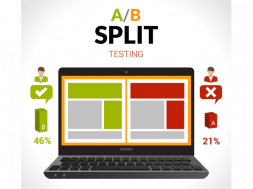
Why a Compelling Value Proposition is More Important to Your School Than Mission and Vision
By Wallace K. Pond, Ph.D., www.WallaceKPond.com
I imagine that just about every school that ever was has had a mission and vision statement. In fact, such statements are often required by accreditors or regulators in one form or another and usually take a prominent place in self-studies, handbooks and school websites. Most of us would agree that they vary widely in quality, timeliness, and reality!
In my case, as a program director, chief academic officer, president, and consultant, I have participated in and led dozens of exercises designed to define organizations through mission, vision, and values. These can be very worthwhile exercises because they help organizations understand fundamental issues like why they exist, what they value, and what they aspire to be. Mission and vision statements, and particularly core values, serve as guideposts that inform important decisions about strategy, resource allocation, and other issues that drive success or failure and sustainability. And core values serve as a sort of “true north” when determining what the right thing to do is.
However, in the current rapid change, hyper-competitive, highly commoditized world of career education, a more important question relative to the future success of a college or university might be: Why would a student choose us?
It is becoming more clear to me, both as a CEO and a consultant in the current VUCA environment1, that what differentiates schools that thrive from those that just survive or even fail is not their mission or vision statements or even their values. While those are important, there is a highly dynamic, if not volatile “where the rubber meets the road” imperative faced by virtually all customer or client driven organizations. It boils down to the value proposition to the customer compared to the value proposition of other possible choices offered by the competition. In the “school business,” we can often attract students into an initial transaction with dynamic marketing or aggressive pricing or convenience, but over time, in order to succeed in the hyper-competitive and commoditized environment, our students, who frankly see themselves as retail customers, must believe that there is genuine value for them in the educational product we are selling – and not only genuine value – but value that is demonstrably greater than what is available from the school down the street. The value proposition itself becomes a key differentiator that sustains customer loyalty and advocacy in a market defined by almost unlimited choice for the consumer.
While I rarely engage an organization that does not have a mission or vision statement (and have never worked in or with a school without such statements), I frequently find organizations and schools that do not have an articulated value proposition. That value proposition can reflect many things for a school’s students such as quality, cost, return on investment, service, benefits, flexibility, support, employability, etc., but with rare exception, students today almost always have choices and usually many choices of where to purchase educational programs, so there has to be a good reason (value proposition) they will choose your institution over another. In some cases the value can even be related to “prestige” or “image,” but it still has to exist for the consumer.
Even in the limited number of schools that have thought about and committed to a compelling value proposition for their student-customers, only the most sophisticated ones have a truly student-centered notion of what is valuable and important to the consumer.
It is actually more common to see such statements based on what the institution thinks is valuable.
What this all boils down to for school leaders is that the kind of self-definition exercises that lead to a better understanding of who you are and why you exist is still important, but from a competitive perspective, clearly understanding why customers would choose you over a competing institution is more critical to your viability in the market. And that is why even if mission and vision statements are required for accreditation or other purposes, articulating a compelling value proposition is probably more important to your success!
A quick how-to guide
If your school is typical, you have likely done market research and/or student surveys, but you have not dedicated yourself to a formal process to articulate a clear value proposition or the work that comes after that.
Whether you partner with an external consultant or not, the first step is to determine what things are of the most value to your students (and potential students) as customers. This is not the same as market research or satisfaction surveys. The purpose is to determine what students want to pay for and what outcomes will cause them to believe they have received good value for their money. This information forms the foundation of an articulated value proposition, and it is often more simple and straightforward than you would think. For a variety of reasons, it is also fairly common to discover that what students say they value is not what your institution is consistently focused on or good at! More on that in a minute.
The next big step is to align your brand message with the value proposition. In other words, to win in the marketplace, your messaging to potential students must reflect what you’ve determined they find valuable and are willing to pay for. If you are really lucky, what your school does well already aligns with what students find valuable as consumers.
If you are more typical, there will be areas of stark misalignment between would-be value and what you actually provide to your students.
In those cases, you have to decide what your comfort level is with advertising a value proposition that is still, in some areas, more aspirational than actual.
In short, there are three steps in the process:
- articulating the value proposition,
- aligning your brand message and other marketing to that proposition, and
- executing on an operational environment that makes the messaging true.
Steps two and three are dynamic and often happen both in parallel and in series as a sort of work in progress.
In summary, like just about anything else that matters, developing and acting on a compelling value proposition will take time and effort, but in the current operating environment, it may be the most important activity you can do to improve your school’s competitiveness, while also providing your students a higher quality and higher value experience!
DR. WALLACE K. POND, for the last 15 years, has been a senior executive in higher education, holding both campus level and corporate positions overseeing large, multi-campus and online institutions of higher education in the U.S. and abroad. He has served as chancellor, president, CEO, and CAO (Chief Academic Officer).
Dr. Pond has been a mission-driven educator for 28 years. He began his career as an adjunct professor and high school teacher and spent six years in the elementary and secondary classroom working primarily with at-risk youth. Wallace was also a public school administrator and spent another six years as a full-time education professor and administrator, working in both on ground campus and online education, bringing education to underserved students. He has also taught as an adjunct instructor at six universities in the U.S. and Europe. Dr. Pond has lived, worked, and studied in North America, Latin America, the Caribbean, Europe and Asia. He has presented nationally and internationally and is the author of numerous articles and the book, “The Lights Are On, Is Anybody Home? Education in America.”
Wallace, a licensed pilot, has a bachelor’s degree in Spanish, a Master’s degree in Human Resource Education, and a Ph.D. in Education. He has two grown children and resides with his wife and youngest daughter in Colorado.
Contact Information: Wallace K. Pond, Ph.D. // 719-247-0486 // wkpond@comcast.net // www.wallacekpond.com











